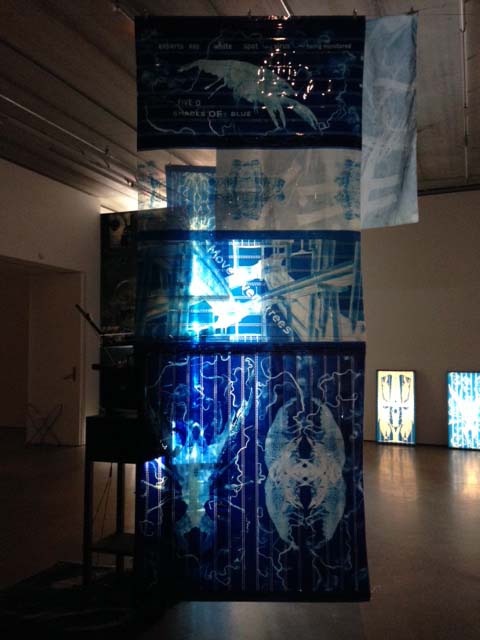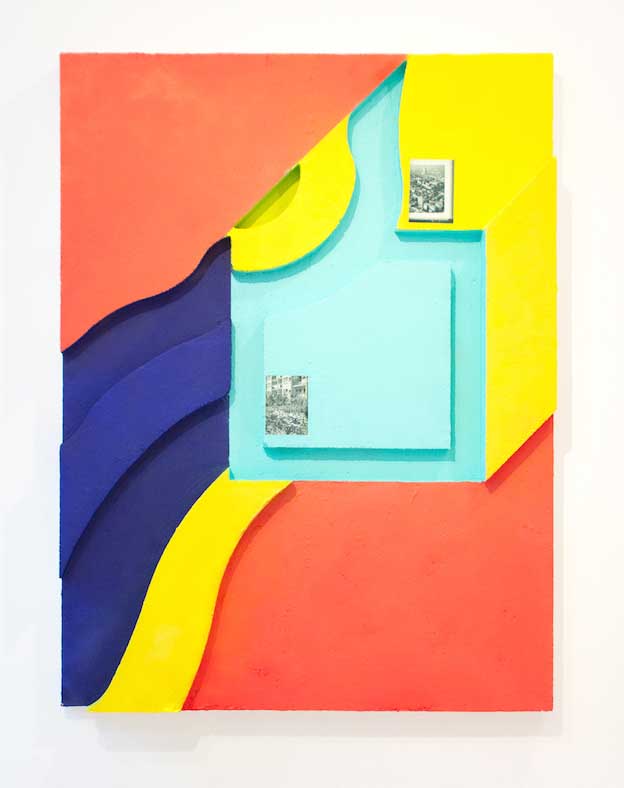 |
| Simon Mullan, Alphatürk, 2014. Image: Belenius / Nordenhake. |
Simon Mullan is the first artist to show at Gallery Belenius / Nordenhake in Stockholm. The new gallery is co-founded by Niklas Belenius and Erik Nordenhake and built upon Belenius’s previous gallery, Galleri Niklas Belenius, where Nordenhake previously worked with Belenius. They have now relocated and are partners; this solo exhibition with Mullan invites Scandinavia to embrace an emerging stint of international artists alongside the artists whom they represented at their previous space.
For those of us who have been watching Simon Mullan’s work progress, it is evident why this artist has been chosen to launch this gallery initiative. Mullan (originally from Vienna but now based in Berlin) is an artist who could be pigeonholed as an exhibitionist or crowd pleaser at first glance, but when investigating the rationale behind his shock-and-awe displays and sublime contortions of masculinity, one can discern that the artist’s gestures do not only wish to magnify that which is already magnified but to question power plays which loom, circulate and fuel his points of investigation. Mullan experiments with the explosive and charged; he attempts to fill that which is filled to its brim with a bit more.
Examples of Mullan’s works which embody this extreme aesthetic are Intermorior (2011) where he uses his body as rotating target on a ‘wheel of death’ for a calculating knife thrower’s carnivalesque practice, or The Burnout of Your Life (2010) where Mullan cruises the streets of Stockholm in a classic automobile emitting obtrusive exhaust and burnt rubber into the urban air. The artist appears to be not only a contemporary ‘dare devil’ but genuinely invested in discovering what makes ranging sub-cultures tick and thrive via his firsthand experiences and journeys to adopt these cultures’ attributes as his own, as they mutually warm up to him. Some of these sub-cultures: rockabilly, greaser (a.k.a. ‘raggare’ in Sweden), circus / carnie life, hip-hop & rap, the outsider, pariah or freak.
Background
The exhibition is titled “Alpha” which refers both to Mullan’s solo debut and one series of works incorporated into the show; this series is unique in that the materials and methods contrast yet simultaneously complement one another. The material used for the Alpha series are numerous collected bomber jackets consisting of shimmery, sensuous nylon; the clothing article (originally referred to as the MA-1 flight jacket) is historically tied to the American air force industry of the mid-twentieth century. The artist has stitched together fragments from these found jackets into a delicate quilt-like patchwork, large- and small-scale, even sacrificing his own cherished jacket to complete one of the works, as is noted in a supplementary text on the artist’s work. The artistic method used for Alpha contradicts and subverts the initial use of the jacket—an item once used as a device for conquering, destroying, colonizing and rescuing. The quilt is a seemingly harmless, domestic object and subtle indicator of soft power (soft ~ to attract, seduce or co-opt versus hard ~ force, coerce or bribe), feminized craft and the inherent necessity of the quotidian and communal, thereby confronting the validity and usefulness of hard power which is often aligned with manhood / masculinity as it both fiercely and desperately posits itself throughout history. Yet, the quilt is sewn together with meticulous skill parallel to a specialized fighter pilot or assassin, hinting at the sheer strength of savvy know-how regardless of gender.
The word ‘alpha’ also refers to the first letter of the Greek alphabet; when said, “AL-FAH” it is also part of the military phonetic alphabet, used by those who require clarity when communicating important information. Additionally, it is used to denote the most powerful leader of any pack or collective of entities, yet this exhibition is not interested in these leaders as straightforward objects to envision in their actuality. Every day, the media is guilty of highlighting and embracing only the ‘best’ and ‘brightest,’ leaving others of supposed lesser value—or the less competitive-minded—on the sidelines as passive spectator or fodder for negligence. Such ‘alpha’ leaders are not on direct display; the show instead consists of morphed, ghostlike remnants of these apparitions embodying the Alpha series; these high-ranking, aspiring phantoms once shed their protective, utilitarian skin which Mullan later discovered to concoct his creative offshoots. The exhibition is inherently residual and layered, much like the stories which once accompanied those who originally wore each jacket. When viewing the large-scale work Blue Velvet, one is reminded by both the name and fabric hues of a Lynchian motif—where the mundane is ritualized and excessive, the beautiful are damned, and the powerful: delusional, criminally minded.
Contexts in Society
And now: a paradigm shift away from these leaders as mythological representations and catalysts to how societies realistically incorporate them into their schematics. How do sects and groups differentiate themselves from one another—both today and in the past, as a response to unfolding current events? Has ample progress to communicate or recognize what needs to be seen and heard occurred, or is there little escape from this vicious cycle, where reward systems prove to be vacuous, where individuals jump pointless hurdles or ruthlessly wear any mask or uniform needed to reach an oftentimes misleading goal? There is an ongoing debate which questions the validity of expression and free speech—the argument: even though everyone has a voice, does everyone deserve to be heard? Mullan observes that the bomber jacket has been used as visual marker and code, dependent on its color and context, and though some sub-cultures clearly identify and relate best to that which can be seen, what can we extract from socio-political spheres which prove to be invisible (or silent) yet just as influential (or more) as those blatantly identifiable?
Writing from the perspective of an American who migrated to Sweden, it is fascinating to view artists such as Mullan exploring certain sub-cultures associated with my home country (e.g. greaser, Americana, rap) but via his own set of cultural and geographical coordinates. Generally speaking, most individuals associate extravagant displays of assertion and ‘machismo’ not with Sweden but with America. It may prove stimulating to see Mullan working within US borders in the future. Responding to sub-cultures—long distance (secondary, tertiary) versus face-to-face (primary)—are bound to have unusual results when placed side-by-side. What happens when one encounters the original ‘bling’ and not its copycat simulacrum?
This exhibition includes other works such as framed steel razorblades Bladerunners (2012), and there is no question that the black Hummer SUV positioned in front of the gallery’s entrance during the vernissage is a peripheral component and reminder of Mullan’s vehicular style and power-induced oeuvre which encompasses works like Mensch, Maschine, Umwelt (2008) and his performance Continuous Power (2011). IT ALL HAPPENED SO FAST once read a banner serving as prop for one of Mullan’s performances at Minibar Artist Space; with this season, it seems that Stockholm’s art scene may have more room to advance at a pace which pleases.
To see the review in context, click here.








